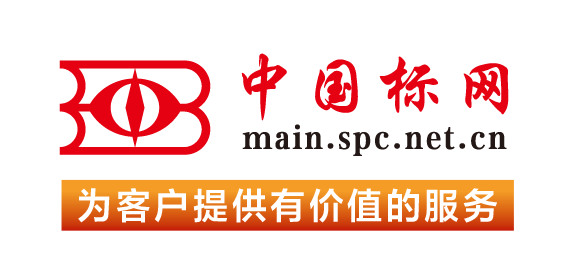【国外标准】 Standard Practice for Ultrasonic Testing of Flat Panel Composites and Sandwich Core Materials Used in Aerospace Applications
本网站 发布时间:
2024-02-28
开通会员免费在线看70000余条国内标准,赠送文本下载次数,单本最低仅合13.3元!还可享标准出版进度查询、定制跟踪推送、标准查新等超多特权!
查看详情>>
适用范围:
5.1 This practice is intended primarily for the testing of flat panel composites and sandwich core panels to an acceptance criteria most typically specified in a purchase order or other contractual document.5.2 Basis of Application—There are areas in this practice that require agreement between the cognizant engineering organization and the supplier, or specific direction from the cognizant engineering organization.1.1 This practice establishes two procedures for ultrasonic testing (UT) of flat panel composites and flat sandwich core panels (parallel surfaces). Typical as-fabricated lay-ups include uniaxial, cross ply and angle ply laminates; as well as honeycomb sandwich core materials. These procedures can be used throughout the life cycle of the materials; product and process design optimization, on line process control, after manufacture inspection, and in service inspection. Contact methods such as angle-beam techniques using shear waves, or surface-beam techniques using Lamb waves, are not discussed.1.2 Ultrasonic testing is a common subsurface method for detection of laminar oriented discontinuities. Two techniques can be considered based on panel surface accessibility; pulse echo for one sided and through transmission (bubblers/squirters) for two sided. As used in this practice, both require the use of a pulsed straight-beam ultrasonic longitudinal wave followed by observing indications of either the reflected (pulse-echo) or received (through transmission) wave. The general types of anomalies detected by both techniques include foreign materials, delamination, disbond/un-bond, fiber de-bonding, inclusions, porosity, and voids.1.3 This practice provides two ultrasonic test procedures. Each has its own merits and requirements for inspection and shall be selected as agreed upon in a contractual document.1.3.1 Test Procedure A, Pulse Echo (non-contacting and contacting), is at a minimum a single transducer transmitting and receiving a longitudinal wave in the range of 0.5 to 20 MHz (see Fig. 1). This procedure requires access to only one side of the specimen. This procedure can be conducted by automated or manual means. Automated and manual test results may be imaged or recorded.FIG. 1 Test Procedure A, Pulse Echo Apparatus Set-up1.3.2 Test Procedure B, Through Transmission, is a combination of two transducers. One transmits a longitudinal wave and the other receives the longitudinal wave in the range of 0.5 MHz to 20 MHz (see Fig. 2). This procedure requires access to both sides of the specimen. This procedure is automated and the examination results are recorded.FIG. 2 Test Procedure B, Through Transmission Apparatus Set-up1.4 This practice does not specify accept-reject criteria.1.5 This standard does not purport to address all of the safety concerns, if any, associated with its use. It is the responsibility of the user of this standard to establish appropriate safety, health, environmental practices and determine the applicability of regulatory limitations prior to use.1.6 This international standard was developed in accordance with internationally recognized principles on standardization established in the Decision on Principles for the Development of International Standards, Guides and Recommendations issued by the World Trade Organization Technical Barriers to Trade (TBT) Committee.
标准号:
ASTM E2580-17
标准名称:
Standard Practice for Ultrasonic Testing of Flat Panel Composites and Sandwich Core Materials Used in Aerospace Applications
英文名称:
Standard Practice for Ultrasonic Testing of Flat Panel Composites and Sandwich Core Materials Used in Aerospace Applications标准状态:
Active-
发布日期:
-
实施日期:
出版语种:
- 其它标准
- 上一篇: ASTM E2573-19 Standard Practice for Specimen Preparation and Mounting of Site-Fabricated Stretch Systems to Assess Surface Burning Characteristics
- 下一篇: ASTM E262-17 Standard Test Method for Determining Thermal Neutron Reaction Rates and Thermal Neutron Fluence Rates by Radioactivation Techniques
- 推荐标准
- ASTM 51401-21 Standard Practice for Use of a Dichromate Dosimetry System
- ASTM 51956-21 Standard Practice for Use of a Thermoluminescence-Dosimetry System (TLD System) for Radiation Processing
- ASTM A1010/A1010M-24 Standard Specification for Higher-Strength Martensitic Stainless Steel Plate, Sheet, and Strip
- ASTM A1016/A1016M-24 Standard Specification for General Requirements for Ferritic Alloy Steel, Austenitic Alloy Steel, and Stainless Steel Tubes
- ASTM A105/A105M-24 Standard Specification for Carbon Steel Forgings for Piping Applications
- ASTM A1064/A1064M-24 Standard Specification for Carbon-Steel Wire and Welded Wire Reinforcement, Plain and Deformed, for Concrete
- ASTM A108-24 Standard Specification for Steel Bar, Carbon and Alloy, Cold-Finished
- ASTM A1080/A1080M-24 Standard Practice for Hot Isostatic Pressing of Steel, Stainless Steel, and Related Alloy Castings
- ASTM A1090/A1090M-19(2024) Standard Specification for Forged Rings and Hollows for Use as Base Plates in Power Transmission Structures
- ASTM A1115/A1115M-24 Standard Practice for Construction of Mechanically Stabilized Earth Walls with Inextensible Soil Reinforcement
- ASTM A1128-24 Standard Specification for Stainless Steel Shielded, Rubber Gasketed Couplings Having an Integral Restraint Feature for Joining Hubless Cast Iron Soil Pipes and Fittings Where External Restraint Is Required
- ASTM A179/A179M-24 Standard Specification for Seamless Cold-Drawn Low-Carbon Steel Heat-Exchanger and Condenser Tubes
- ASTM A234/A234M-24 Standard Specification for Piping Fittings of Wrought Carbon Steel and Alloy Steel for Moderate and High Temperature Service
- ASTM A242/A242M-24 Standard Specification for High-Strength Low-Alloy Structural Steel
- ASTM A249/A249M-24a Standard Specification for Welded Austenitic Steel Boiler, Superheater, Heat-Exchanger, and Condenser Tubes
 我的标准
我的标准 购物车
购物车 400-168-0010
400-168-0010














